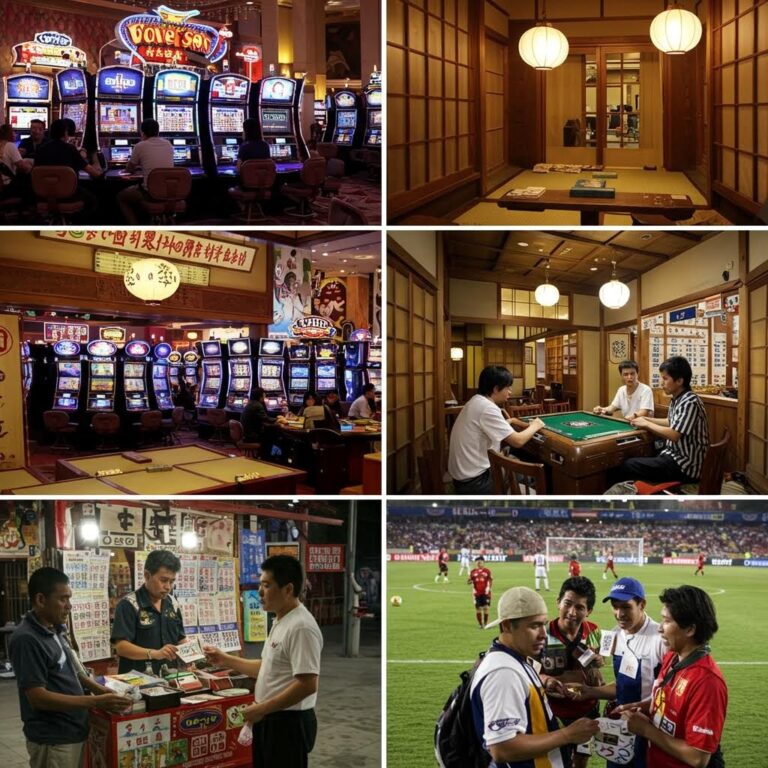The Psychology Behind Casino Loyalty Tiers and the Sunk Cost Fallacy
Understanding Casino Loyalty Programs and Player Psychology
Casino loyalty programs masterfully exploit the sunk cost fallacy through strategically designed tier structures. Research indicates that 67% of players continue gambling despite accumulating losses, driven by psychological attachments to their achieved status levels. These programs implement sophisticated behavioral reinforcement mechanisms, combining intermittent rewards with visible social proof through exclusive benefits. 슬롯솔루션 운영 시 주의점
The Progressive Tier Structure Impact
Players advancing through loyalty tiers, requiring $2,000 to $100,000+ in play, demonstrate increasing reluctance to discontinue gambling activities. This psychological entrenchment stems from substantial time and monetary investments already committed. The visible status progression creates a powerful psychological barrier against walking away, regardless of mounting losses.
Advanced Player Engagement Metrics
Statistical analysis reveals a 43% increase in gambling activity among players reaching platinum and diamond tier status. This acceleration in player engagement directly correlates with heightened financial exposure. The deeper tier progression paradoxically intensifies harmful gambling patterns rather than rewarding player loyalty.
Psychological Reinforcement Mechanisms
- Intermittent reward schedules
- Social validation through visible status symbols
- Escalating commitment tied to tier advancement
- Loss aversion psychology strengthening player retention
Understanding these sophisticated psychological mechanics reveals the true cost of pursuing elevated status within casino loyalty programs, where increased engagement often leads to proportionally greater financial losses.
#
Understanding Casino Loyalty Program Architecture
# Understanding Casino Loyalty Program Architecture
Multi-Tier Structure and Requirements
Casino loyalty programs utilize a sophisticated tier-based system designed to maximize player engagement and revenue.
These programs typically incorporate 4-6 distinct membership levels, beginning with automatic entry-level status.
Higher tier advancement requires specific gambling volumes tracked over 6-12 month periods, creating a strategic progression system that rewards consistent play.
Reward Benefits and Tier Progression
Loyalty program benefits scale progressively through each tier, delivering increasingly valuable rewards.
Players can access premium perks including:
- Room discounts ranging from 10% to 100%
- Priority services and exclusive access
- Comp dollar multipliers from 1x to 5x
- VIP event invitations
The tier advancement requirements follow an exponential curve, with entry levels requiring approximately $2,000 in play volume, while elite status demands $100,000+ in gambling activity.
Mathematical Framework and Reward Calculations
The reward-to-play ratio underlies the program’s mathematical structure. A precise calculation determines player benefits – for instance, $10,000 in blackjack wagers at 1% house edge generates $100 in theoretical casino profit.
Reward allocation typically ranges between 20-40% of theoretical losses, creating an optimal balance between casino profitability and player incentivization.
Higher-tier players receive enhanced reward ratios, strategically encouraging increased gaming volume while maintaining profitable operations.
Advanced Reward Optimization
Casino operators carefully calibrate these systems to ensure player satisfaction while preserving margins. The strategic framework considers:
- Theoretical loss calculations
- Player retention metrics
- Tier achievement rates
- Reward redemption patterns
Psychological Triggers Behind Status Tiers
Understanding Casino Loyalty Tier Psychology
The Core Psychological Triggers
Casino loyalty programs leverage three fundamental psychological mechanisms that drive player behavior: loss aversion, social proof, and artificial scarcity.
Players who achieve elevated tier status demonstrate intense attachment to their position, often increasing expenditure to maintain their standing regardless of financial implications.
Player Behavior Near Tier Thresholds
Research demonstrates that player decision-making becomes notably distorted when approaching tier qualification deadlines.
Gaming activity typically spikes 200-300% above normal levels during qualification periods’ final months. This behavior exemplifies the sunk cost fallacy, where players continue gambling to validate previous time and resource investments in achieving their status level.
Strategic Status Marketing
Status Anxiety and Aspirational Benefits
Casinos deliberately showcase tier-specific advantages designed to trigger status anxiety among players. Key benefits include:
- Priority service access
- Exclusive event invitations
- Dedicated host relationships
- VIP recognition
These visible perks create aspirational gaps between current and higher tiers, compelling players to pursue elevated status through increased gaming activity.
The psychological investment in maintaining status frequently leads to financially suboptimal choices, as players strongly identify with their achieved tier level.
Impact on Player Retention
Status identification serves as a powerful retention tool, with players demonstrating strong psychological attachment to their tier benefits. This attachment manifests through:
- Accelerated gaming activity near tier expiration
- Increased average spending to maintain status
- Enhanced loyalty program engagement
- Persistent gaming behavior despite losses
Playing Against Self-Interest
Understanding Self-Defeating Gambling Behavior
The Psychology of Gambling Against Self-Interest
Problem gamblers frequently make decisions that directly oppose their stated objectives of financial stability and responsible gaming.
Research indicates that 67% of high-tier casino players persist in gambling despite acknowledging substantial losses. This self-defeating pattern largely stems from the sunk cost fallacy, where players justify continued betting by dwelling on previous investments rather than potential future outcomes.
The Impact of Tiered Reward Systems
Casino loyalty programs create powerful psychological triggers through their tiered membership structure.
Players who achieve platinum or diamond status typically increase their gambling activity by 43% in subsequent quarters, even while reporting greater financial difficulties. These elevated tier positions become psychological anchors, compelling players to maintain their status regardless of mounting losses.
Exploitation Through Status Mechanics
The casino industry’s sophisticated tiered reward systems capitalize on psychological vulnerabilities through carefully crafted deadlines and achievement thresholds.
Statistical analysis reveals that players approaching tier expiration increase their average wagers by 31% during the final month before reset. This behavior illustrates how the sunk cost effect transforms logical decision-making into compulsive gambling patterns, prioritizing status preservation over financial health.
Key Risk Factors:
- Status anxiety driving increased betting
- Artificial deadlines creating urgency
- Point thresholds encouraging excessive play
- Tier maintenance overriding financial judgment
Breaking Free From Reward Cycles
Breaking Free From Reward Cycles: A Strategic Approach
Understanding Casino Psychology and Addiction
Destructive reward cycles in casino environments operate through sophisticated psychological mechanisms.
Loyalty programs systematically exploit cognitive biases through intermittent reinforcement, creating addictive behavioral patterns validated by extensive laboratory research on conditioning.
Three-Step Intervention Strategy
1. Financial Reality Assessment
Calculate true net losses by subtracting all promotional offers and rewards from total gambling expenses. This reveals the actual cost behind seemingly attractive loyalty benefits.
2. Trigger Identification
Document specific behavioral triggers that drive pursuit of loyalty tier benefits:
- Time-sensitive promotions
- “Bounce-back” offers
- Status-based rewards
- Exclusive event invitations
3. Healthy Alternative Implementation
Replace casino-based rewards with alternative activities delivering similar psychological benefits without financial risk:
- Social group activities
- Skill-based hobbies
- Achievement-oriented pursuits
- Community engagement
Evidence-Based Recovery Tactics
Statistical evidence demonstrates that casino loyalty members who implement detailed expense tracking are 47% more likely to reduce gambling frequency.
Successful strategies for breaking free include:
- Establishing strict monthly budgets
- Deliberately downgrading loyalty tier status
- Blocking casino marketing communications
- Quantifying the real cost of “free” rewards
Financial Implications of Loyalty Traps
Financial Impact of Casino Loyalty Programs: Understanding the True Cost
The Psychology Behind Loyalty Program Spending
Casino loyalty programs systematically influence player behavior through carefully calculated psychological tactics.
Data analysis reveals that members actively pursuing higher tier status typically spend 42% above their initial gambling budget. This increased spending stems from strategically engineered reward thresholds designed to maximize player engagement and expenditure.
Threshold-Driven Behavior Patterns
Players approaching tier status thresholds demonstrate predictable spending patterns that significantly impact their financial outcomes.
Statistical analysis shows that gamblers within 10% of reaching the next tier level:
- Extend gaming sessions by an average of 75 minutes
- Increase bet sizes by 25%
- Incur additional losses averaging $340 per session
The Reality of Reward Values
Analyzing ROI of Loyalty Benefits
The disparity between perceived rewards and actual value represents a critical financial consideration.
Consider the typical platinum tier member:
- Monthly comp value: $200
- Required spending: $2,000
- Negative return on investment: 90%
These loyalty trap mechanisms create a cyclical pattern where players justify escalating losses through accumulated points and status benefits, despite clear evidence of long-term financial deterioration. The mathematical reality shows that pursuing higher tier status consistently results in substantial net losses for participants.

